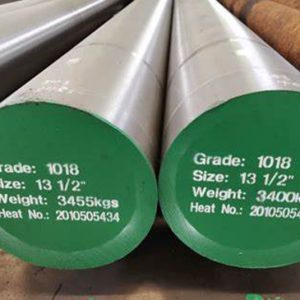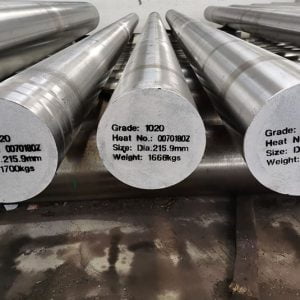Introduction
Hot rolling is a crucial process in the metal manufacturing industry, enabling the production of high-quality steel and other metals. However, this process also has significant environmental impacts. Understanding these impacts and exploring sustainable practices is essential for reducing the environmental footprint of hot rolling operations. This comprehensive guide will delve into the environmental implications of hot rolling and outline various strategies and practices to mitigate these effects, promoting a more sustainable approach to metal manufacturing.
Overview of Hot Rolling Process

Hot rolling involves heating metal above its recrystallization temperature and then deforming it between rollers to achieve desired shapes and thicknesses. This process improves the metal’s mechanical properties and workability. The primary steps in hot rolling include:
Heating: The metal is heated in a furnace to temperatures typically ranging between 1100°C to 1300°C.
Rolling: The heated metal passes through a series of rollers, which progressively reduce its thickness.
Cooling: The rolled metal is then cooled in controlled conditions to stabilize its structure.
Environmental Impacts of Hot Rolling
Energy Consumption
Hot rolling is an energy-intensive process, primarily due to the high temperatures required for heating the metal. The energy consumption in hot rolling can be categorized into:
- Direct Energy: Energy used directly in heating the metal, primarily from fossil fuels.
- Indirect Energy: Energy used in supporting processes such as air compression, water pumping, and lighting.
Emissions
The combustion of fossil fuels for heating generates significant emissions, including:
- CO2: Carbon dioxide, a major greenhouse gas contributing to global warming.
- NOx and SOx: Nitrogen oxides and sulfur oxides, which contribute to air pollution and acid rain.
- Particulate Matter: Fine particles that can harm human health and the environment.
Water Usage
Hot rolling requires substantial amounts of water for cooling and descaling the metal. This water usage can lead to:
- Thermal Pollution: Discharge of heated water into natural water bodies, affecting aquatic ecosystems.
- Water Scarcity: Overuse of local water resources, impacting community water supplies.
Waste Generation
The process generates various types of waste, including:
- Slag: A by-product of metal purification that can be hazardous.
- Scale: Oxidized metal flakes formed during heating and rolling, which need to be managed and disposed of.
Land Use
The establishment of hot rolling mills often requires significant land use, which can lead to deforestation and habitat loss.
Sustainable Practices in Hot Rolling
Energy Efficiency Improvements
Improving energy efficiency is crucial for reducing the environmental impact of hot rolling. Strategies include:
- Advanced Furnace Technology: Using regenerative and recuperative burners to recover waste heat and reduce fuel consumption.
- Insulation: Enhancing furnace insulation to minimize heat loss.
- Process Optimization: Implementing advanced control systems to optimize rolling schedules and reduce idle times.
Emission Control Technologies
Adopting technologies to control and reduce emissions is essential. These include:
- Carbon Capture and Storage (CCS): Capturing CO2 emissions from furnaces and storing them underground.
- Flue Gas Desulfurization: Removing sulfur oxides from exhaust gases using chemical scrubbers.
- Electrostatic Precipitators: Capturing particulate matter from flue gases using electrostatic forces.
Water Management
Effective water management practices can mitigate the impacts on local water resources:
- Closed-Loop Systems: Recycling water within the rolling mill to reduce freshwater consumption.
- Cooling Towers: Using cooling towers to dissipate heat without discharging hot water into natural bodies.
- Treatment and Reuse: Treating wastewater to remove contaminants and reusing it in the process.
Waste Reduction and Recycling
Minimizing waste generation and promoting recycling can significantly reduce environmental impacts:
- Slag Utilization: Using slag in construction materials, road paving, and cement production.
- Scale Recycling: Collecting and recycling scale back into the steel production process.
- Zero Waste Initiatives: Striving for zero waste by optimizing processes and finding innovative uses for by-products.
Sustainable Sourcing and Circular Economy
Adopting sustainable sourcing practices and promoting a circular economy approach can enhance the sustainability of hot rolling:
- Sustainable Raw Materials: Sourcing raw materials from suppliers with sustainable practices and certifications.
- Circular Economy: Designing products and processes to facilitate recycling and reuse, minimizing waste throughout the product lifecycle.
Case Studies of Sustainable Hot Rolling Practices
Energy-Efficient Furnace Upgrades
A leading steel manufacturer implemented advanced regenerative burners and enhanced furnace insulation, resulting in a 20% reduction in fuel consumption and a significant decrease in CO2 emissions.
Closed-Loop Water Recycling
A hot rolling mill in Europe adopted a closed-loop water recycling system, reducing freshwater consumption by 80% and eliminating thermal pollution in nearby rivers.
Waste-to-Value Initiatives
A company in Japan developed a process to convert slag into high-quality construction materials, turning a hazardous waste into a valuable resource and reducing landfill use.
Table: Environmental Impact Comparison of Different Hot Rolling Practices

| Practice | Energy Consumption | CO2 Emissions | Water Usage | Waste Generation | Land Use |
|---|---|---|---|---|---|
| Conventional Hot Rolling | High | High | High | High | Significant |
| Energy-Efficient Upgrades | Medium | Medium | High | High | Significant |
| Closed-Loop Water Systems | High | High | Low | High | Significant |
| Waste Recycling Programs | High | High | High | Low | Significant |
| Comprehensive Sustainability | Medium | Medium | Low | Low | Optimized |
Conclusion
The hot rolling process is essential for producing high-quality metals, but it comes with significant environmental impacts. By adopting sustainable practices, such as improving energy efficiency, controlling emissions, managing water use, reducing waste, and promoting a circular economy, the metal manufacturing industry can mitigate these impacts and contribute to a more sustainable future. Through continuous innovation and commitment to sustainability, hot rolling operations can achieve a balance between industrial needs and environmental responsibility.
FAQ
What is hot rolling?
Hot rolling is a metalworking process where metal is heated above its recrystallization temperature and then deformed between rollers to achieve desired shapes and thicknesses.
Why is hot rolling environmentally impactful?
Hot rolling is energy-intensive, generates significant emissions, uses substantial water, and produces waste. These factors contribute to its environmental impact.
What are sustainable practices in hot rolling?
Sustainable practices include energy efficiency improvements, emission control technologies, water management strategies, waste reduction and recycling, and adopting sustainable sourcing and circular economy principles.
How can energy consumption in hot rolling be reduced?
Energy consumption can be reduced through advanced furnace technology, improved insulation, and process optimization to minimize idle times and enhance efficiency.
What are the benefits of closed-loop water recycling in hot rolling?
Closed-loop water recycling reduces freshwater consumption, eliminates thermal pollution, and minimizes the impact on local water resources.









